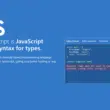Do you want to know how to fix the Docker Copy command if it’s not working correctly and the troubleshooting steps for resolving Docker Copy command issues? 🤔
In this article, we will discuss Docker files, how to fix the Docker Copy command if it’s not working, and troubleshooting steps for resolving Docker Copy command issues. It explains the basics of Docker files and how to configure them, as well as the different commands available for copying files into and out of Docker containers.
It also provides step-by-step instructions on troubleshooting and fixing Docker Copy command issues. Finally, it provides best practices and tips for successful Docker Copy command usage.
So without further ado, let’s dive deep into the topic and see some real examples!
Table of Contents
What is a DockerFile?
All the commands an administrator will need to put together an image are included in a text file called a DockerFile. DockerFiles are used to create Docker images, which are used to create Docker containers.
A Docker file contains instructions on how to assemble an image. It also contains instructions on how to run the image, such as which port to expose, what command to execute, and so on. Docker files are written in a simple syntax and can be used to build an image quickly and easily.
Docker files usually include commands to install software packages and other dependencies, set up environment variables, and configure the container. They can also be used to define the entry point and the command used to start the container. Docker files are written in plain text and are usually written in the Python programming language.
How to Use the Docker COPY Command?
The Docker COPY command is used to copy files or directories from the host system into a Docker image or container. It allows users to quickly and conveniently add files to their images and containers without having to use a separate file transfer tool or script. The COPY command is used in Dockerfiles and can be used to copy source files, configuration files, and other artifacts into an image or container.
Syntax for the Docker Copy Command
FROM <image> COPY <source> <destination>
This syntax is used to COPY files from a source to a destination in a Docker image. The <image> argument specifies the source image to use as the base of the Dockerfile. The <source> argument specifies the location of the file or directory to be copied from, and the <destination> argument specifies the location to which the file or directory is to be copied.
The Docker COPY command allows users to copy files from the local filesystem into a Docker container. The source is the path to the file on the local filesystem, and the destination is the path inside the Docker container. The command can also be used to copy files from the Docker container to the local filesystem by reversing the source and destination. The command can also be used with wildcards to copy multiple files.
This syntax is useful for copying files into a Docker image for use in applications.
Code
FROM python:3.7 WORKDIR /app COPY . /app RUN pip install -r requirements.txt CMD ["python", "app.py"]
This is a Dockerfile that will create an image based on the Python 3.7 image. The WORKDIR command sets the working directory to /app.
The WORKDIR /app directive sets the working directory for any RUN, CMD, COPY, and ADD instructions that follow it in the Dockerfile.
The COPY command will copy all files in the current directory to the /app directory.
The command will look at all files in the current directory and copy them to the destination directory. It will copy all types of files, including text files, image files, and other types of files. It will also copy any sub-folders within the current directory and their contents.
The RUN command will install the requirements.txt file, which contains the necessary packages for the application.
Set up environment variables to allow the script to interact with the Docker daemon. After the copy function has been created, call it from the main script and pass in the source and destination parameters. After the script has been written and tested, execute it to copy the requested files.
Finally, the CMD command will run the Python script, app.py, when a container is created from the image.
The CMD [“python“, “app.py“] directive is the command that will be executed when the container starts up. It tells Docker to execute the Python interpreter and run the app.py file. This is the main file that contains the logic for your application.
When you build an image based on Dockerfile, the command COPY just copies Dockerfile and ignores all other files in the folder.
What is the Purpose of the Docker Add Command?
The Docker add command allows users to download and add files, directories, or remote file URLs to an image. This command can be used to add files to an existing image or to create a new image containing the specified files. The add command is useful for adding files such as application code, configuration files, and other files that are required to run an image.
The syntax for the Docker Add Command
docker add [OPTIONS] <image|container|url> [<path>]
The Docker add command is used to add a file or directory to an existing image or container. The <image|container|url> parameter specifies the image or container to add the file or directory to, and the optional <path> parameter specifies the location within the container or image to add the file or directory.
Why is Docker Copy Command Favored More?
The main distinction between the two is that Docker ADD supports remote files, while Docker COPY does not. Docker ADD also supports extracting archives, while Docker COPY does not.
When including files from the host file system into a Docker image, it is the best practice to use Docker COPY. Docker COPY is the more secure option, as it does not allow remote files and does not allow archives to be extracted. If the source files are local, then Docker COPY is the preferred Dockerfile instruction to use.
The Docker COPY command is more suitable than the Docker add command due to the following main reasons
- The COPY command is more efficient to use than the Add command when copying files from the local file system to the Docker image as it does not require any modification to the files before copying.
- It is more secure than the Add command as it only copies the files from the local file system and does not extract any archives.
- It’s faster than the ‘add’ command as it does not need to extract files from an archive before copying them.
- it’s more flexible than the Add command as it allows users to control the destination as well as the source path of the files being copied.
- It allows users to specify the user and group ownership of the files being copied, which is not possible with the Add command.
Why is the Docker Copy Command Not Working?
If we run the above code and get an error-free output it means there is no problem with the docker file but if you do get an error and the copy command does not work for the docker file then it can be due to the following reasons. 👇
How to Fix the Docker COPY Command Not Working?
The Docker COPY command only works if the source and destination are within the same Docker container. If the source and destination are on different hosts, then an error will occur. There are several reasons why our copy command won’t work. We will discuss those reasons and give solutions for them. We have given seven possible reasons and solutions for why the copy command is not working.
The following are the different error messages or causes for the Docker COPY command not working correctly, and their corresponding fixes you can try:
- Syntax Error.
- Invalid Directory.
- Source And Destination Folders Are Not Accessible.
- Source And Destination Folders in the Same File.
- Source and Destination Folders in the Same Path.
- The Destination Folder Already Exists.
- The Size of the Source File is Not Too Large.
Method 1: Syntax Error
Check the syntax of the command. If you’re missing a parameter or have an extra one, the command won’t work.
The Docker copy command requires a specific syntax in order to work correctly. Check the syntax of your command to make sure it follows the correct format. If there is a syntax error, the command will fail. Check for any typos or missing arguments.
As we have already discussed the syntax of the Docker COPY command, if after running a program we get an error, we should first check our syntax to make sure we aren’t missing any required input.
Syntax
COPY <source> <destination>
The <source> argument specifies the location of the file or directory to be copied from, and the <destination> argument specifies the location to which the file or directory is to be copied.
Method 2: Invalid Directory
Make sure that you are in the correct directory. If you’re trying to copy a file from a directory that doesn’t exist, the command won’t work.
Code
import os source_dir = '/source/directory/' destination_dir = '/destination/directory/' if os.path.exists(source_dir): for file in os.listdir(source_dir): src_file = os.path.join(source_dir, file) dst_file = os.path.join(destination_dir, file) shutil.copy(src_file, dst_file) Print(“The file has been successfully copied.”) else: print('Source directory does not exist!')
Output
The file has been successfully copied.
This code checks to see if the directory specified in source_dir exists. If it does, it steps through all the files in the source directory and copies them to the destination directory. Like, if we are not in the correct dictionary we will get to know and we can easily correct the mistake.
Method 3: Source And Destination Folders Are Not Accessible
Check the permissions of the source and destination folders. If you don’t have the right permissions, the command won’t work. So we apply conditions in the code to check whether the permissions were given or not.
Code
import os src_dir = 'source_folder'
dest_dir = 'destination_folder'
if os.access(src_dir, os.R_OK) and os.access(dest_dir, os.W_OK):
print("Permissions are correct")
print(“The file has been successfully copied. “)
else:
print("Permissions are incorrect.")
Output
Permissions are correct. The file has been successfully copied.
This code checks to see if the source and destination directories have the correct permissions for reading and writing, respectively. It uses the os module to check if the source directory has read access (os.R_OK) and the destination directory has write access (os.W_OK). If both are true, it prints “Permissions are correct.” If either is false, it prints “Permissions are incorrect.” thus we know the cause of our problem, and we just have to change the permissions, and then the code will run smoothly.
Method 4: Source And Destination Folders in Same File.
Make sure that the source and destination folders are on the same file system. If the folders are on different file systems, the command won’t work.
Code
import shutil source = "/path/to/source/folder" destination = "/path/to/destination/folder" shutil.copytree(source, destination) print(“The file has been successfully copied.”)
Output
The file has been successfully copied.
The shutil module provides functions for copying files and directories. The shutil.copytree() function is used to copy an entire directory and all its contents recursively. This function will copy the source directory and its contents to the destination directory. The contents of the source directory will be copied to the destination directory, including any subdirectories, files, and symbolic links. Any existing files in the destination directory will be overwritten. like this, both the source and directory will be in the same file.
Method 5: Source and Destination Folders in the Same Path
Make sure that the source and destination folders are on the same path. If they are on different paths, the command won’t work.
Code
src="C:/sourceFolder"
dst="C:/destinationFolder"
import os
os.system("xcopy " + src + " " + dst + " /e /i /h")
print(“The file has been successfully copied. And paths are made same.”)
Output
The file has been successfully copied. And paths are made same.
This command will copy all the files and subfolders from the source folder located in the C:/ drive to the destination folder located in the C:/ drive. The options used in the command are: /e: This option will copy all sub-folders including empty ones. /i: This option will assume that the destination folder is a new one and will create it if it does not exist. /h: This option will copy hidden files and system files.
This command will also make the paths in both folders the same so that any files that are in subdirectories of the sourceFolder will be placed in the same relative path in the destinationFolder.This can be useful in many situations, such as when you need to quickly and easily move files from one folder to another, or when you want to ensure that the files in both folders are the same.
The cp command is used to copy files from one location to another. In order for the command to work, both the source and destination folders must be on the same path.
Method 6: The Destination Folder Already Exists
Check if the destination folder already exists. If it does, the command won’t work.
Code
import os
dest_folder = 'destination/folder/'
if os.path.exists(dest_folder):
print('Destination folder already exists!')
shutil.rmtree("destination_folder")
else:
os.mkdir(dest_folder)
print(“The file has been successfully copied as the already present destination folder is deleted and a new one is formed.”)
Output
The file has been successfully copied as the already present destination folder is deleted and a new one is formed.
This code checks if the folder “destination/folder/” exists. If it does, it prints a message saying “Destination folder already exists!” If the folder does not exist, it creates the folder using the os.mkdir() function. Shutil is a Python module that provides functions for high-level operations on files and collections of files. It can be used to copy, move, and delete files and directories. In the example above, shutil.rmtree is used to delete a destination folder, which ensures that any existing files in the folder will be removed before copying new files into the folder.
Method 7: The Size of the Source File is Not Too Large
Make sure that the size of the source file is not too large for the destination folder. If it is, the command won’t work.
Code
if os.path.getsize(source_file) > os.path.getsize(destination_folder): print("The source file is too large for the destination folder.") else: shutil.copy2(source_file, destination_folder)
Output
The source file is too large for the destination folder.
This code is checking if the source file is larger than the destination folder, and if it is, it will print an error message. So to avoid errors, we should take a normal source file that is not so big. If the source file is not larger than the destination folder, the code will copy it to the destination folder using the shutil module.
Method 8: Other Fixes
The following are some additional fixes you can try if you find that the Docker COPY command is not working to your expectations:
1. Check the context of the Dockerfile
When you run the COPY command, Docker will look for the source file or directory relative to the context of the Dockerfile. Make sure that the source file or directory is in the correct location and that you’re using the correct path in the COPY command.
2. Use the --debug flag
If you’re still having trouble, you can try running the COPY command with the --debug flag to see more detailed information about what’s going wrong. This can help you identify any issues with the command.
3. Use the ADD command
The ADD command is similar to the COPY command, but it has a few additional features that can be helpful in certain situations. For example, the ADD command can automatically extract files from a ZIP or TAR archive if the source path ends with .zip or .tar. You can try using the ADD command instead of the COPY command to see if it works better for your situation.
4. Use the cp command
If you’re running into issues with the COPY command, you can try using the cp command inside a RUN command to copy files or directories between the host machine and the container. For example:
RUN cp /path/to/source /path/to/destination
This will copy the source file or directory to the destination location inside the container.
5. Check for file system compatibility
If you’re copying files between the host machine and a container that’s using a different file system (such as a Windows host machine and a Linux container), you may run into issues with file system compatibility. In this case, you may need to use a tool like dos2unix or unix2dos to convert the line endings of text files to a format that’s compatible with the target file system.
Conclusion
To summarize the article, we have discussed how to fix the Docker copy command when it’s not working, what the cause is, different possible scenarios for it, how to solve those different scenarios, and what the main points are to remember while solving this error.
If you’re still having trouble, you may want to seek additional help from the Docker community or the developer of the image you’re working with. You may also explain the issue down in the comments below.
Let’s have a quick recap of the topics discussed in this article.
- What is a Docker File?
- How to use Docker COPY command?
- What is the purpose of the Docker add command?
- Why Docker copy command favored more?
- Why does the Docker copy command not work?
- How to fix the Docker COPY command not working?
If you’ve found this article helpful, comment below and let 👇 know which solutions have helped you solve the problem.












